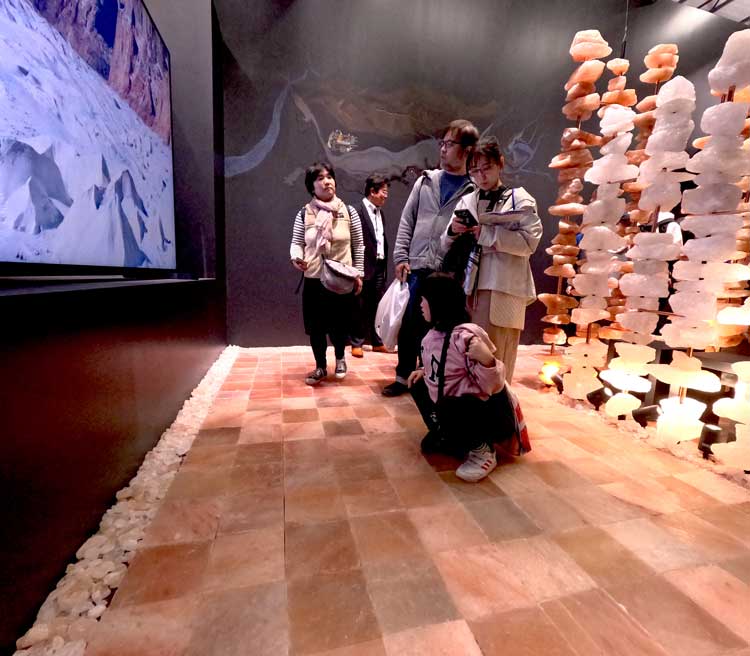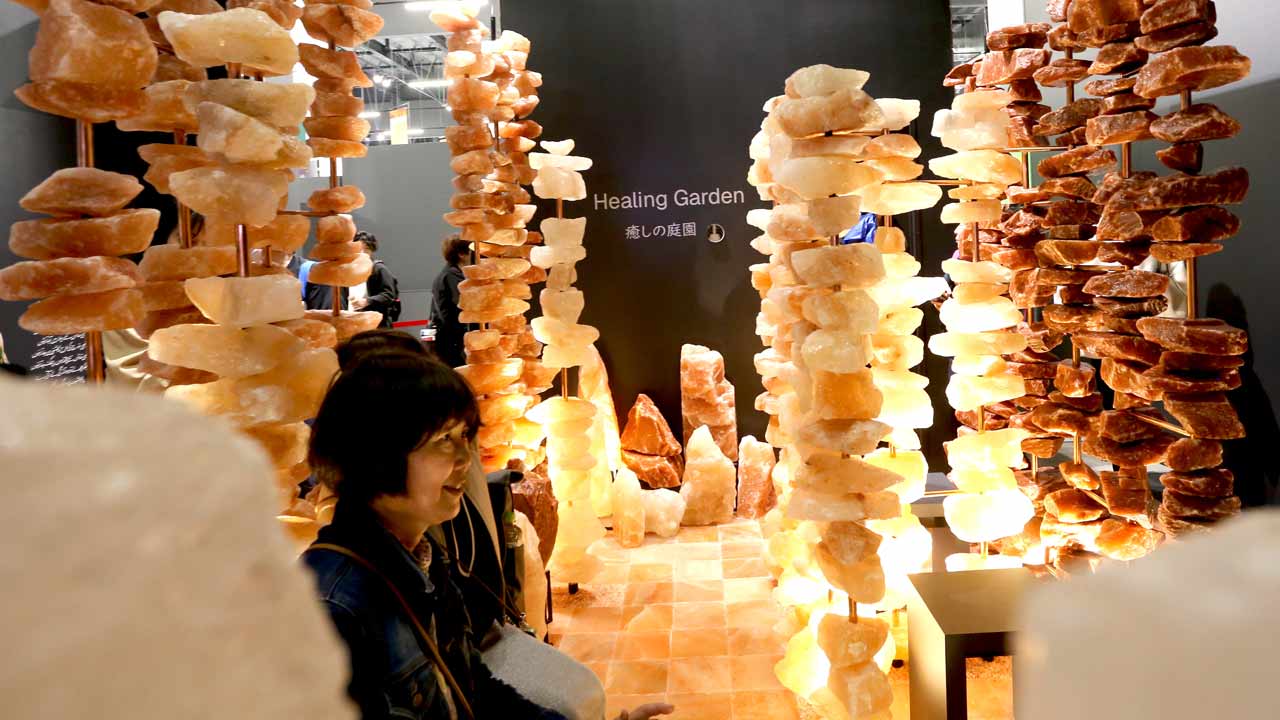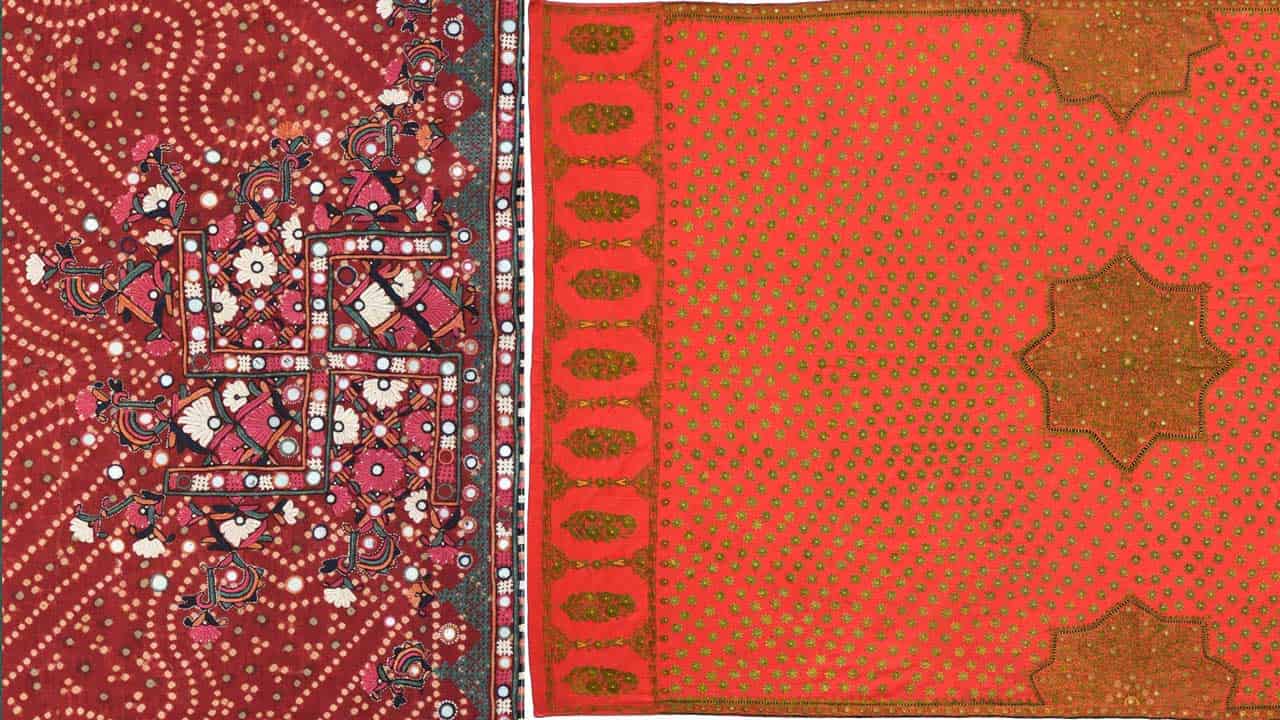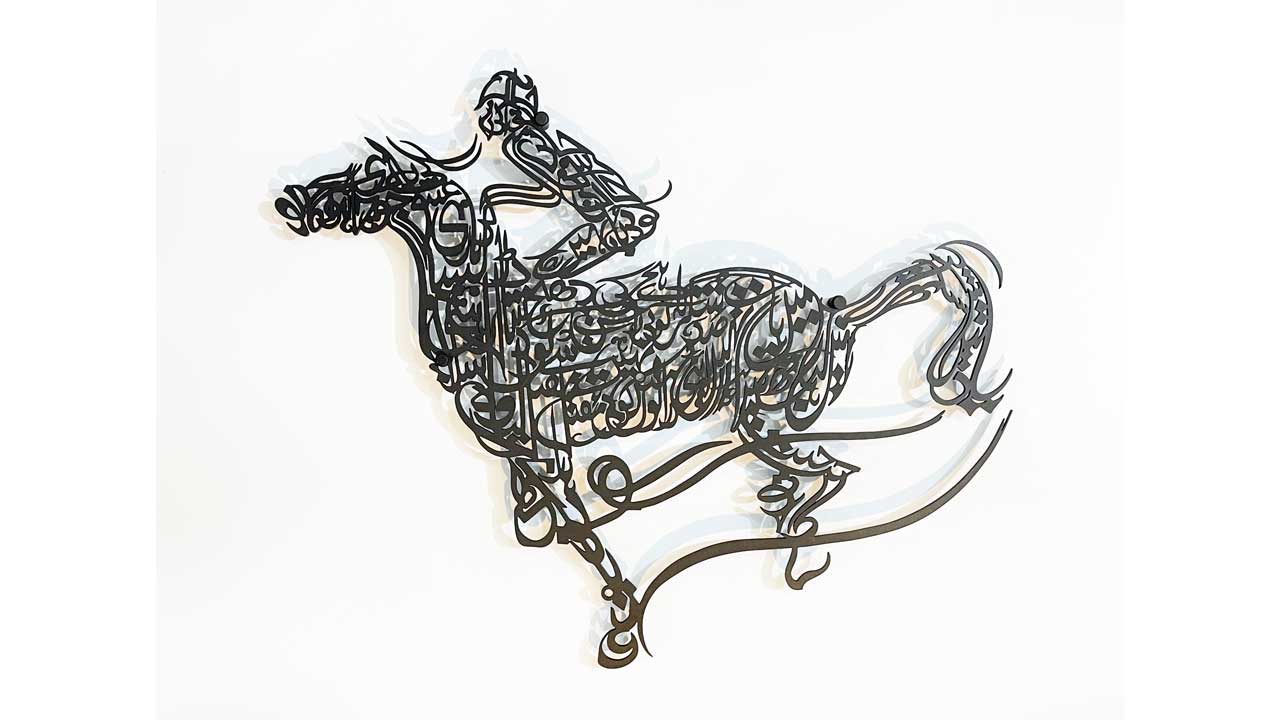When Salt Becomes Sanctuary
The Pakistan Pavilion, Expo 2025 Osaka, Kansai, Japan
At the core of Expo 2025 Osaka — whose theme, Designing Future Societies for Our Lives, imagines tomorrow’s world through today’s choices — the Pakistan Pavilion emerges not merely as a constructed space but as a living presence, resonant with the deep time of mineral existence. Shunning the gloss of steel-and-glass modernity and the language of spectacle, it turns instead to the raw, unvarnished truth of nature: hewn entirely from the ancient pink salt of Pakistan’s Salt Range, a geological formation nearly 800 million years old. In this act, the Pavilion is recast — not as display, but as offering; not as monument, but as meditation. A deeply thoughtful response to the curatorial call, ‘The Universe in a Grain of Salt’, it distils vastness into stillness. Salt, humble yet essential, transcends all social boundaries — present in the simplest kitchens of the remotest villages and indispensable to the finest haute cuisine.

Where other national pavilions may strive to dazzle or declare, Pakistan answers with restraint and reverence. It invites reflection rather than reaction, intimacy over immersion. Within its walls, the salt becomes far more than a building block -it is an embodiment of memory and time, of endurance and quiet power. It anchors the Pavilion not only as structure, but as story, essence, and soul.

Design as Advocacy
Curator Noorjehan Bilgrami, who is a well-known visual artist, curator, researcher, author, and educationist, previously curated the Pakistan Pavilion at the Dubai Expo in 2020, and won the Silver Award from among 192 entries. She weaves together art, architecture, science, and sustainability into a unified and resonant vision at Expo Osaka. Her curatorial lens balances lyricism with clarity, rooted in a deep respect for material traditions while engaging with the urgencies of the present. It is an approach that is as intuitive as it is intentional — shaped by decades of dedication to preserving cultural legacies and reimagining them through the language of contemporary craft.
Bilgrami and her small curatorial team comprising architects Fatima Ausat and Irfan Naqi, and sculptor Fahim Rao have crafted a Pavilion that is as much a spatial essay as it is a sensory encounter. The Trade Development Authority of Pakistan (TDAP) as the client of the Pakistan Pavilion, and the Pakistan Mineral Development Corporation (PMDC) gave their full support to the curator and her team.


The message at the Pavilion resonates with quiet clarity: salt is far more than a kitchen staple or a trade commodity. It is a keeper of cultural memory, a source of healing, and a vessel of ecological knowledge.

Through thoughtfully designed exhibits, ranging from digital artist Abrar Qazi’s interactive installation— a luminous, touch-responsive table that invites exploration— to mineral displays, the Pavilion conveys this richness without resorting to overt instruction. Both informative and immersive, the installations have become major crowd-pullers, seamlessly blending art, technology, and storytelling. Scientific insights blend seamlessly with sensory exploration, from the ancient Khewra Salt Mine to the glittering salt flats of the Indus Basin, allowing visitors to engage with Pakistan’s geological heritage and holistic traditions in deeply immersive, multidimensional ways.

A sweeping charcoal wall unfolds, eventually opening up to reveal the awe-inspiring landscape of the ancient Potohar plateau — the cradle of Pakistan’s historic salt mines. Along the dramatic expanse, a specially commissioned Urdu poem by the celebrated Zehra Nigah is displayed, accompanied by translations in English and Japanese. The wall also becomes a canvas for delicate, hand-painted imagery in the Miniature tradition, created by Farooq Mustafa Maeda, a Pakistani artist based in Japan for over two decades. With painstaking precision and poetic sensitivity, he has brought each detail to life directly on the wall’s surface. Complementing this visual journey is a short documentary by Nisar Malik, playing in a continuous loop. The film is enriched by the haunting voice of Faiza Kassim and the soul-stirring flute of Haider Rahman.

The Pavilion’s post-Expo vision reflects a commendable sense of environmental responsibility. Every block of salt used in its construction is destined for reuse, ensuring that no material is discarded. This cradle-to-cradle philosophy embodies a truly holistic design ethic; one that prioritises sustainability not just in form and function, but in foresight, valuing legacy over spectacle.
Salt as Matter and Meaning
The Pavilion’s architecture is shaped by a deep engagement with salt’s intrinsic qualities: its translucence, crystalline form, fragility, and its prehistoric origins. Floors, walls, and sculptural elements are crafted entirely from raw Pink Himalayan Salt. This is more than a sustainable or visual gesture; it is a philosophical stance. The experience of moving through the space is immersive and intimate: one walks on salt, breathes its mineral-rich air, and witnesses light dissolving gently through its translucent surfaces. Rather than standing apart from the material, visitors are enveloped by it, and invited to inhabit it.
The salt’s soft pink tone, tinted by iron deposits from vanished oceans, is a silent marker of deep geological time. Every grain carries the memory of Earth’s ancient rhythms. To walk through the Pavilion is to traverse layers of prehistory — to move not just through space, but through sediment, memory, and meaning. This is not spectacle or assertion, it is a quiet encounter. In a world increasingly defined by the virtual, such embodied tactility feels profoundly transformative.
A Pavilion that Breathes
The Pakistan Pavilion is as much an exploration of material intelligence as it is a masterclass in atmospheric design. Rather than dominating the material, the structure seems to have arisen from it — an organic emergence rather than an imposition. The sculptural interventions honour the inherent fragility of salt, shaping it into forms that, while delicate in appearance, possess quiet strength. The result is a built environment that feels less constructed and more cultivated; walls and contours that appear to have crystallised into place rather than been assembled.
Light is central to the Pavilion’s sensory experience. Lighting strategy is subtle, avoiding dramatics in favour of restraint and reverence. Using soft, amber-toned illumination, light seeps through the salt walls and reflects gently across their granular surfaces, bathing the space in a hushed, ethereal glow. In places, the effect is so immersive it feels like standing inside a breathing crystal. This interplay of light not only accentuates the salt’s natural translucence but also contributes to the Pavilion’s thermal balance, underlining a commitment to both aesthetic sensitivity and environmental efficiency.
Halotherapy and the Architecture of Wellness
Among the Pavilion’s most evocative spaces is The Healing Garden, a serene and immersive chamber that goes beyond symbolic reference to heritage. It reinterprets the salt mine as a sanctuary for contemporary wellness, conjuring the therapeutic essence of subterranean salt caverns known to support respiratory function and emotional equilibrium. This space is less a room than a quiet ritual. Salt vapour subtly laces the air, the granular floor cool beneath the feet, while the salt-lined walls shimmer with a soft, crystalline glow. Visitors are invited to pause, breathe deeply, and surrender to the elemental calm. It is a deeply meditative experience, where architecture doesn’t merely house healing, it becomes the healer itself.
Departing from the sterile environments of conventional medical spaces, The Healing Garden offers a remedy rooted in nature and beauty. But this gesture is more than aesthetic — it is also political. It reclaims ancestral modes of healing at a time when wellness is often commodified, costly, and chemically driven. By centring halotherapy, the Pavilion challenges the dominance of the global pharmaceutical regime and proposes an alternative: care that is preventative, grounded, and intrinsically tied to the land.
Speaking of “political acts” one is also reminded of the Salt Satyagraha1, led by Mahatma Gandhi in 1930, which was a pivotal act of nonviolent protest against the British salt tax and monopoly during the colonial rule in India. Salt is a basic necessity, and so Gandhi and his followers marched 240 miles from his ashram at Sabarmati (near Ahmedabad) to the coastal village of Dandi in Gujarat. Along with 78 carefully chosen followers, he walked for 24 days, attracting growing crowds and nationwide attention. By making salt from seawater, Gandhi symbolically broke the unjust law, sparking nationwide civil disobedience and drawing global attention to India’s independence movement. The Salt Satyagraha remains one of the most iconic episodes of India’s freedom struggle. It demonstrated that a simple act, like making salt, could become a powerful statement of defiance and unity, highlighting the power of peaceful resistance.

Land Art
The Pakistan Pavilion is resolutely horizontal, and grounded. It draws visitors inward and downward, closer to the ground and to themselves. The architectural rhythm is slow and sensuous, encouraging pause and presence. In doing so, it radically departs from the over-stimulated environments often found at global expos, offering instead an architecture of mindfulness, and grace.
In many ways, the Pavilion functions as a kind of a sculptural intervention that blurs the lines between land art, architecture, and environmental installation. It echoes the practices of artists like Andy Goldsworthy or James Turrell, where natural materials and light are used not to dominate space but to reveal its deeper rhythms.
In contrast to much of land art, which has historically centered Western geographies and voices, the Pakistan Pavilion is firmly anchored in the cultural and ecological fabric of South Asia. It draws richly from Sufi symbolism, traditional healing practices, and indigenous knowledge systems. Through this grounding, it not only reclaims the discourse around natural materials but also asserts Pakistan’s place at the forefront of environmentally conscious and spiritually resonant design. Rather than occupying the margins, it emerges as a powerful origin point for a design philosophy that is both rooted and visionary.
The Universe within a Grain of Salt
Ultimately, what makes the Pakistan Pavilion unforgettable is its ability to do so much with so little. It reminds us that even the simplest substance — a grain of salt — can embody resilience, renewal, and transformative care.
In an Expo dominated by spectacle and excess, the Pavilion offers a quiet but powerful counterpoint. It doesn’t announce itself with scale or flash, but with the deep logic of the earth, the wisdom of centuries, and a design philosophy rooted in the essential. It is, in every sense, a subtle revolution.
The Expo 2025 Osaka, Kansai was held from 13 April 2025 to 13 October 2025.The Pakistan Pavilion at Expo 2025 Osaka, Kansai, Japan has been curated under the direction of Principal Curator Noorjehan Bilgrami, with the support of the curatorial team comprising Fatima Ausat (architect), Irfan Naqi (architect), and Fahim Rao (sculptor). The project has been commissioned by the Trade Development Authority of Pakistan (TDAP) and supported by the Pakistan Mineral Development Corporation (PMDC). Architectural consultancy has been provided by Shahid Abdullah, and thematic guidance by the Theme Committee consisting of Yawar Jilani, Mahboob Khan, Salima Hashmi, Shehnaz Ismail, and Mushtaq Chhapra.
Title Image: Fahim Rao, Healing Garden Sculptures. Iron, stainless steel, carbon rods, copper pipes and salt rocks. 29 rods in different sizes ranging from 6 ft, 7ft and 8 ft. Each sculpture weighs 75 to 85 kg. Salt rock from Warcha and Kala Bagh in different shades of crystal white, pale pink, pink and red. 2024 – 2025.
Photo credits: Irfan Naqi, Faheem Rao and Noorjehan Bilgrami
Disclaimer:
Dates for EXPO Osaka, Kansai, Japan: April 13, 2025 – October 13, 2025
Pakistan has won two international awards at Expo 2025 in Osaka, Japan, marking a proud moment for the country. The Pakistan Pavilion earned the Bronze Medal in the Exhibition Category and also received the prestigious Editors’ Choice Award for exceptional creativity.
Despite being allocated only 53 square meters, the pavilion attracted over 1.7 million visitors, showcasing Pakistan’s vibrant culture, innovation, and vision. The global event featured 158 countries and regions and pavilions of 7 international organisations. Out of these, over 30 countries built their own individual pavilions, while the rest were gathered in five “Commons” pavilions.
Principal Curator: Noorjehan Bilgrami
Noorjehan Bilgrami the Principal Curator of the Pakistan Pavilion at Expo 2025 in Osaka, is a distinguished visual artist, curator, researcher, author, and educationist. She was also behind the award-winning Pavilion at Expo 2020 Dubai, which ranked second among 92 countries. In 2023, she received the Tamgha-e-Imtiaz for her contributions to arts and crafts. A founder of the Indus Valley School of Art and Architecture (IVS), she served as its first Executive Director and remains on its Board of Governors. She also serves on the board of the Pakistan Fashion Institute. She established KOEL in 1978, reviving hand-block printing, weaving, and natural dyes. Since 1990, KOEL Gallery has hosted over 300 exhibitions, supporting emerging artists. Her art installations and residencies span globally – from Sydney and Hawaii to Tokyo and Qatar – while her exhibition Tana Bana travelled across the US and Japan. She is the author of several books, including Sindh jo Ajrak and Clay, Cloth, Wood, Metal, and Stone. Her contemplative art practice explores deeply personal yet universal themes and has been showcased in solo and group exhibitions in Pakistan, USA, Australia, Korea, Sri Lanka, South Africa and India.
- Salt March (India 1930), Encyclopaedia Britannica. https://www.britannica.com/event/Salt-March and Wolpert, S. A. (2001). Gandhi’s Passion: The Life and Legacy of Mahatma Gandhi. Oxford University Press.
Rumana Husain
Rumana Husain is a dedicated author, art critic, artist, and educator, who has made significant contributions to storytelling, art, and social impact. She served as the co-founding Senior Editor of NuktaArt magazine from 2004 to 2014. She has written two critically acclaimed coffee-table books detailing the lives of Karachi's inhabitants, and is the author and illustrator of over 90 children's books, with four of them winning awards in Pakistan, Nepal, and India. Furthermore, she has authored hundreds of articles, travelogues, and reviews for various national newspapers and magazines.



There are no comments